Ken Wilber – An Integral Organizational Leadership Seminar
$17.00
Ken Wilber – An Integral Organizational Leadership Seminar
File: 11 WMVs
Size: 339.1 MB
Product Delivery: You will receive a download link via your order email.
Ken Wilber – An Integral Organizational Leadership Seminar
Salepage: http://integralleadershipreview.com/5710-coda-the-integral-organizational-leadership-workshop/
Archive: View
Fifty participants, a dozen staff and Ken Wilber– all of the makings of a truly unique learning experience as CEOs, coaches, consultants, academics mingled to explore this elusive topic of the application of integral theory and practice to leadership in organizations. Virtually everyone left feeling they had gotten something of value; some left feeling that the workshop fell short of the mark.
The facilitators, presenters and staff did a wonderful job of making sure that we had plenty to do and think about. Bert Parlee, John Forman, Brett Thomas, Michael Putz and Leo Burke each gave the community things to think about and experiences that grounded theory. Ken Wilber was superb in this workshop. He seemed far more grounded and focused than in THE Integral Leadership (now Integral Consciousness) Workshop of a few months ago. I think this was because he seemed truly tuned into his audience.
I had the chance to ask the first question in day one when Ken sat on stage in front of the participants. I pointed out that he had been touted earlier in the day as the foremost thinker about Integral Leadership– if I correctly understood the presenter who said this. Then I asked, “What is Integral Leadership?
My paraphrase of the response: Integral Leadership is having a vision others want to follow.a man or woman who knows more, sees more and provides guidance to others who want to move forward. The capacity to lead has to touch all of the areas that humans have to deal with. We need a map, an integral map. An integral leader is a person who has made the map his/her own and embodies it.
The highlight of the workshop was probably something of a surprise to all of the participants: Diane Hamilton, a student of Utah’s Gengpo Roshi, led us through a process called Big Mind. Personally, this process led to an altered state of consciousness that was stronger (and has been longer lasting, even though episodic) than anything this spiritual novice has experienced.
Every day we did meditation and some physical movement, hike, Qigong, yoga.
Michael Putz, a director at Oracle, did an interesting presentation on innovation, particularly disruptive innovation that can have the impact of radically altering the course and focus of a company. Leo Burke gave a presentation on strategic thinking. This was my personal great disappointment of the workshop. Leo has been gaining considerable experience at Notre Dame over the last couple of years with introducing executives to Integral Leadership. We learned very little about what he has learned about effective approaches to this or the models he uses.
John Forman, Bert Parlee and Brett Thomas were the workhorses of the workshop. They presented on integral change, introduced levels and experiential exercises to speak from different levels in “leader” roles, as well as Robert Kegan and Lisa Laskow Lahey’s work on competing commitments and the four languages from How the Way We Talk Can Change the Way We Work.
SD-based concepts (blue, orange, green and yellow) were used to structure experiential activities, but their use was stereotypical and lacked the rich perspectives of other developmental models such as Commons’ work on systems of meaning making (my interpretation) no did they attempt to integrate the idea of lines and memes in any fashion. This seems to me one of the basic dangers in the way an integral approach is being introduced– an oversimplification that tends to put behaviors into boxes and not respect the complexity of individual and context.
Of course, one of my critics would say that is because I am green that I would make such a comment. I am reminded of Sara Ross’ observation based on S.W, Rosenberg’s work, Systematic thinkers [and green is the first arena of systematic thinking] are flexible, independent, not reliant on social grouping or definition, and conceive themselves as independent entities, though they are not anti-social. They require a sense of independence and freedom of thought and action.” So, my critic falls into the trap that was evident in the frameworks introduced in this workshop. But I think this is the cutting edge challenge in integral work: to find ways of representing and learning from complexity.
I had the opportunity to tape brief interviews with a number of participants. An extraordinary group of people! But it was from some of them that I heard comments that I agreed with, e.g., that the workshop seemed geared at too low a level conceptually with some exceptions. It is also worth noting that developing Integral Leadership is in its formative stages. Perhaps this workshop reflects both how much we have learned and how very much more we have to learn.
Here are brief excerpts from these interviews arranged more or less chronologically. The first interview I did was with Linda Brewer. We did a second interview at the end of the workshop.
- Linda Brewer, CEO of Xenon Global, Inc., New York City, focuses on the relationships between an organization and its customers, its vendors and suppliers, the executive team and strategic partnerships, acquisitions and mergers, and the relationship between divisions.
Q: What is your interest in Integral Leadership?
A: If you are an integral leader you are looking at the left side as opposed to giving it lip service or dashing by it as we do a lot in our action focused world.
Q: You are talking about the interiors of agency and communion. Have you had the opportunity to bring your interest in integral theory into your work?
A: In a couple of different ways, but it is still a big opportunity to explore. One way is with executives in leadership development and building relationships there. For example in a positive oil company we are bringing in different frameworks and management theory to act as a catalyst to really push their performance beyond even what they imagined they could do. They do a quick study of these materials and then we would examine how these would apply in their company. We take the theory into action. We fold integral frameworks into that.
Q: Are there other ways you hope to apply integral theory in the future?
A: I want to take it further. It is easy to use in one-on-one coaching. Then you have to move into the context. You have to have a group of individuals. A lot of it has to do with language. It is important to help them develop their own language. I am always amazed how quickly people will adopt new language.
- Rand Stagen, President of Stagen Leadership Institute, Dallas, Texas
Q: You have a firm that does leadership development and consulting and you are interested in integral work?
A: I am fortunate to have as a business partner, Brett Thomas, one of the facilitators of the IOL Workshop. Our interest in integral really comes from him and his study of Wilber. I have been studying Spiral Dynamics for seven or eight years separate from integral.
We have been doing organization development consulting for mid-market market companies, $50-200 million in revenue. We have discovered that they best way to make a sustainable impact on our clients which is mostly senior executives is to teach them what we are doing as consultants. So we began offering a one-year program that is practice based. The program is based on integral theory. We teach quadrants, levels, lines and other elements to mostly CEOs of our client companies, mostly technology companies.
It is an intense program that has one-day quarterly workshops and a self-directed curriculum for the quarter. They have to submit a weekly report every Monday to their coach or they are kicked out of the program. And we kick a lot of people out. We are only interested in working with high achievers. We work with high potentials. 95% of the managers in America would not resonate with our program or our approach. It is only for the best of the best. We get results and we change behavior, but it requires tremendous discipline.
Q: What is the message?
A: Well, the message to Orange is higher performance, more focus, make more money, get more leverage, be more aligned, beat your competitors. The message is money.
The delivery is emotional intelligence development, alignment, and more clarity around vision. There is a lot on innovation, integral theory, Spiral Dynamics, all packaged in Orange.
- Marianne Colter who was with SAP America, a company that provides packages of integrated software for clients, Probably 70% of the Fortune 1000 are running their software.
Q: How do you go from system implementation and sales processes to being involved in Ken Wilbur and Integral Leadership Development? What is that connection?
A: It was a really funky, self-directed leap and it happened while I was consulting in Portland. I was in the airport bookstore and at the end of the bookshelf was Ken Wilbur’s A Brief History of Everything. Being a curious person, I said, “I want to know everything. (laughs) Okay, I’ll read this. This looks interesting.
It was the most theoretical thing I’d ever read. I was an English teacher; we don’t read theory very much. You don’t get into theory when you’re in English. Here I am reading this heavy theoretical stuff, but I just really got into it. This was cool.
Q: Here you were in Chicago saying I’ve got to get away from this place for a week or whatever, and there is this really interesting looking––what? What did you see?
A: When I learned about the workshops, something just said, “This is where your heart is. This is where your passions are. This is what you should pursue.
Q: Integral University people have talked about having really skilled trainers taking workshops out into the world. Would you like to do that?
A: Very much.They are looking for people to learn from the ground up. I learn from the ground up. What’s the huge picture? And then I need to go right down into the nuts and bolts and then build it back up from there. That’s just how I learn.
There are different learning styles for different people. I am interested in adapting training materials or curriculums to how people best learn and then adapt them into what time does somebody have to dedicate this? It’s taken me five years to get my arms around it. I didn’t go from zero to five; I was learning as I was going, but now I really feel confident talking about it and coming to a seminar. A year ago, I would say, “Oh, I don’t know enough,” to even go to the seminar and I think people who weren’t really grounded in the theories coming to something like this would be completely lost.
- Gunnar Nilsson is President of Human Bandwidth Incorporated in Chicago.
Q: What type of work do you do?
A: I do transformational work and I am an executive coach, a consultant or a thought partner––and then I do some spiritual work.I work typically with Fortune 500 companies and the top tier of executives, sometimes individuals, sometimes the entire team.
Q: Given that context, now that you’ve had a chance to almost complete the workshop on Integral Organizational Leadership, have you had any “Ah-ha’s”? Have there been any significant things that have come up for you?
A: I told my wife the other night that this is like finding missing puzzle pieces. I’ve been working on dozens of puzzles and most of them have a piece or two that are missing, some six or ten pieces are missing. One of the things I got out of the integral nature of the universe, work and business that really deepened this week is that I’ve found more complete solutions. It’s not like I found every puzzle piece, but an awful lot of those puzzle pieces have shown up for me.
Q: What might be an example?
A: One of the things that I’ve worked on typically with people is to always look at a balanced perspective. I think a balanced perspective typically emanates from two sides-it’s like a teeter-totter. What the four quadrants really represent is an animated, broader and deeper perspective than just balance.
- Barry Weiss- at the time of interview he was a vice president with Exult, Inc., a business process outsourcing company with a focus on H.R. administrative and transactional work. As of October 1, 2004, Exult merged with Hewitt Associates, which is a larger firm in the same business, and Barry is a senior executive with Hewitt.
Q: How did you happen to come to a workshop on Integral Leadership?
A:It appealed to me because our company is merging with a much bigger company, Hewitt Associates. They do some of what we do and they do a lot of benefits administration outsourcing and H.R. consulting. we’re going through change management and I thought I would find some helpful tools for working on the executive team integration and transition to come to this conference. Also, I’ve met Ken a couple of times with a common friend of ours, Brother Wayne Teasdale who is a Catholic monk and mystic. I’ve been inspired by Ken’s work for a while and I’m curious about whether he and his cohorts have actually found a way to put theory into practice.
Q: What did you discover?
A: That they are a lot further than I would have guessed. It was very exhilarating.
Q:What do you think you found here that would be most useful to you as you’re facing the merger?
A: Let me answer that in two ways. One is professional and one is personal. On the professional side, I’m sitting with a bunch of impressions about how we could be doing our integration better after today’s session on integral change and the difference between an adaptive change and a technical change. Both professionally and personally I’ve taken kind of a three-year sabbatical from being in leadership positions even though I’m an executive. I’ve intentionally had almost no direct reports. I basically come in on a project basis to help us get new deals done. So this kind of woke up some things that I had just put aside for a while because I felt like I needed a break from leading.
Q: How do you think your leadership will be different as a result of this experience?
A: There were three aspects that I had acquired before this. One was doing leadership of men’s retreats that are Neo-Jungian based. I got to the point where I wasn’t getting much more out of that, even though I was giving a lot to the men who came to it. I’ve been on sabbatical from that for a few years.
Second, I’ve done a Buddhist practice for quite a few years, informally, and the past three and a half years formally in a Tibetan Buddhist lineage with my wife. That’s been an interesting experience that’s congruent with the break from leadership. It has required me to understand what it means to actually become a student in a formal way and discover some antidotes for my arrogance.
Third, in the business setting before I joined Exalt, I had been doing a lot of mentoring, teaching, leading, and strategizing on the management committee of a firm several years ago and in building a 90 lawyer practice group.
Some of the perspectives from here give me a way to pull all of those together. It has helped me understand how a Jungian perspective and Buddhism can complement each other. It has also given me a view on how I can integrate all of that better into a fuller work experience in a leadership capacity.
- Kathy Callahan is the Deputy Regional Administrator for the Environmental Protection Agency in New York. She is the senior career person in the office and a political appointee.
Q: How did you learn about this workshop on Integral Leadership?
A: After September 11th , I was temporarily acting as the senior executive in charge of the EPA’s response to the disaster and became very engaged in that and the concerns and controversy that occurred afterwards. I worked really intensely for three months-six, seven days a week, 14 hours a day-and then for the next two years actually. It really changed my career path.
But in the immediate aftermath, we had people from all over the country come and help us. One person who came just had a very contemplative atmosphere about him in the midst of all this chaos and uncertainty as to what we would do and what did it mean to our society. When he went back home, about a month later he sent me a note and a reading list. Ken Wilber was on the reading list with No Boundary. I read everything on the list and Ken’s book was the most emotionally powerful one-actually, the most spiritually powerful one. I just sort of opened up to the concept of non-dual thinking and then I read and continued to read everything I could get my hands on by Ken.
Last November, my political boss offered me an opportunity to take on this new role as deputy regional administrator and she said, “I want you to think about something that you can do for yourself, for your own life. I don’t care what it is, a trip, a special assignment, but something for you.” In the Spring I couldn’t make it to the workshops, but I could make it to this one and so it just seemed like a gift from heaven.
Q: What did you hope to find here?
A: What I hoped to find was some tools to help me broaden my experience from a personal one, which is wonderful, to one that I can incorporate in my organization and hopefully, ultimately into society. I think that the time is not so far away that I’ll move on from EPA and I have to find a new place. I want to leave EPA in as best a condition as I can with leadership for the future that’s really going to help them grapple with being within government and those constraints, but being able to be free to help with our environment.
Q: What have you found here that is going to help you along that path?
A: I found that there is a community of people who are in the same situation. They’ve learned that the searching is not what it’s about, although it can lead you to a special place, but that you can free yourself from those attachments and make very, very meaningful contributions. The other thing I’ve found is a Big Mind.
Q: Wasn’t that an incredible experience?
A: I find it hard to describe.
Q: I wish I could describe the smile on your face (laugh).
A: (Laugh) it was so great. I just got in touch with parts of me that I really hadn’t consciously focused on and found them able to be in community with each other. I’m really in community with a bigger mind that takes me away from every self-oriented thing, even though I have to be a self and go on as a person.
Q: How do you think you might use some of the things that you’ve encountered here in your job back with EPA or in your life?
A: I can see some real places in EPA where I realize now that I can bring in new dimensions. I can look at the people who we are dealing with outside the agency and within the agency with more of an acknowledgement of their complexity and honor them more and, in that way, also get better progress and response from them.
- Laurel Ross is from Seattle, Washington. She is the Escalation Manager for Developer Support at Microsoft.
Q: How did you happen to come here to this Integral Leadership workshop?
A: Four years ago, I found a woman in Seattle who is an executive coach. I was very unhappy at Microsoft. As a woman in leadership, I felt completely unseen and unheard, positioned for disaster, not for success and thought, how can I make this work? This is a world-class company. Why can’t I do this? So, I paid out of my own pocket for executive coaching because I was just deeply committed. It was either that or a tummy tuck, so I figured I might as well do something that will last longer and be more meaningful to me.
I found Suzanne Anderson and she does integral coaching. She knows Ken and she was friends with his wife. I studied integral practices with her for six months and anchored myself more firmly at that stage. I got clear about where I was. The following year, I sat in a circle of 12 women who were practicing Integral Leadership and discovering and exploring what is it to be uniquely female in Integral Leadership. I believe that there are some very key differences to women’s Integral Leadership.
Q: What has been most important here for you?
A: The validation of what I had been practicing in my life. The acceptance of the fact that my center of gravity is yellow now. I don’t think I had ever really owned that. I think it happens, but I have a tendency to diminish myself, reduce myself and self criticize. The acceptance and owning of the fact that I am in an integral center of gravity now is very joyful and it’s very empowering because there are no more excuses. I’m in.
Q: How do you think this experience is going to impact your leadership when you return to Microsoft?
A: I have lots of good ideas now, so many good practical applications of the work.
Q: Would you give an example of one?
A: Yes. The conversation today was about doing adaptive change versus disruptive change. I realize that what I’ve been doing in my one-on-one’s with my individual employees is the adaptive change work. And then as a group, we do disruptive change. We implement things and actually we’re innovators and drivers of disruptive change because my team has become so high performance now and so high functioning, that we actually lead the way for other people to make changes in the organization. So, I want to explicitly name that for them and give them that. I also have some specific ideas for individuals about where they are in their development and I want to give them a half step to the next level.
Q: Is there anything else that you’re taking from the workshop that was really powerful for you?
A: The wonderful people, connections with all the wonderful people. I just feel like a member of a much larger community now.
Q: Anything else you’d like to add?
A: No, but I think you’re real cute.
At this point I blushed and mumbled something unintelligible!
- Oliver Triebel is from West Germany and has recently returned to McKinsey after heading up management development for Bertelsmann for several years.
Q: You heard about this workshop and decided it was the right thing to do?
A: I enrolled immediately without really knowing just what I wanted to do.
Q: Did you have any idea of what you wanted to gain from it?
A: I was curious. When I came here, I thought I would learn more theory and go away with a list of things to do, diagnostic tools and an analytical tool kit and things to read, a couple of books . .
Q: What did you expect to get from this workshop when you came, what were you looking for?
A: I had expectations on several levels. Knowing that I will start a new job next week, I wanted to have an opportunity to wrap up my year of experiential work, courses and seminars. It felt like the right thing to do to get away for a week.On a personal level, finding just the time to reflect and get closure on certain things, also make plans and look ahead for what is to come.
I wanted to take some ideas back home: how to bring spiral dynamics and the quadrants into the business world, get some tools or diagnostic stuff or analytical instruments, and have maybe a case study about how or what someone had done with this in real life, in a business application.My initial understanding––and that has been confirmed––really was, “I didn’t come here to confirm that I’m yellow or striving to be integral,” or “I want to be an integral leader,” that was not what I was here for. My idea was really, “Give me some better understanding of the levels of the quadrants and some analytical tools to design interventions for people who are on these levels.
Intellectually, some of what we’ve seen here seems to be fairly light, not precise. We are indiscriminately mixing a green organization and a green person. When do people constitute an organization? What is the average of a green, an orange and a blue person? An orange organization or what? What’s the middle ground here; how do you evaluate. I wanted some definition, something really precise or even to just ask questions…
Q: In other words, individuals and organizations are really constellations of colors because of the different levels of development in the lines. Being able to make more refined distinctions is important to you?
A: Yes. For example, how do I mediate between departments? One is blue, the other is orange. This is a typical problem in business––for individuals and groups of people. Is the group more than the sum of each individual? Probably, yes, but how does that fit into the theory of levels of consciousness? Is that its own line? I have all these questions. The good news is that there is room for my own contributions in the future, which is the inspiring part of it, but intellectually, I missed a certain level of rigor that I’m used to.
Q: So based on what you have experience here, do you have any idea how you might apply this in your work back when you get started?
A: A couple of ideas. One idea is that I’m pretty sure that the quadrants and the levels will help me to better understand certain client situations, better analyze certain problems, because I will always be in the role of someone who has to bring in the left quadrants. This is part of my role, right? In this capability building, redesign of H.R. processes, intellectual capital, knowledge management role, it’s always the left side and not the right side that I have to look at and that the clients want me to look at.
Having a framework that will allow me to argue to fellow consultants and to clients-look, you’re missing something here and my team and I can contribute-that is great. Designing interventions for groups of people that are at a certain level of consciousness that will be step two. If we really do a couple of workshops with clients to train them in a new strategy, I think it will tremendously help me to design better stuff. It may not be integral, but I’m committed to use integral thinking whenever I need it.
- Linda Brewer- second interview.
Q: You’ve just come through four and a half days of intense workshop. What were you looking for that brought you to this experience?
A: I was looking for a way to pull a whole bunch of different things together. I think there are several ways that things were not quite in sync or in alignment and I needed to pull some things into alignment. I also think I needed a much richer depth of understanding, which just being here in person made such a huge difference for that.
Conceptually I was getting a whole lot of this stuff. Sometimes in action, as I operated in the business world, I was actually using it. But I didn’t know how much and to what degree I was using it. I think that now I can pull a lot of those pieces together in two ways. One is in my business life and of course, the place that I don’t ever intend going but always end up somehow is in my personal life (laugh). This work gives me a bunch of tools to use and a bunch of lenses to use in business, one on one relationships, conversation with individuals and also in the design of group-to-group relationships.
Q: What were the highlights for you?
A: I think I was about halfway through and all of a sudden, things just started popping in my head. There were all kinds of learning and absorbing that I went through. Big Mind was enormous. It was so valuable to walk through in two ways; first, just very personally to walk through and get in deeper and deeper and deeper and, second to experience it as a process, as something that I could actually walk people through very delicately, very gently with a lot of trust and volunteering on the other side. That was just really amazing.
Q: One of the things that came out of the business model work in the workshop had to do with shifting focus from the right side to the left side. Are you moving more into the left side of the quadrants?
A: Yes, I’ve always done that, but I think I have a different voice around it and certainly a different set of language around it now. Where I’ve always lightly touched and then danced away because it gets a little bit too scary, I actually feel safer now in having those conversations with executives who are retiring or executives who are going through huge career shifts. I’ve always been sort of hesitant to talk about it, but now I feel like I can do it in a safe way for both them and for me. We can have a conversation about how they are going to incorporate spirituality into what they do––to look at the emotional, the spiritual, the physical and how they’re going to design their lives differently.
Q: Is there anything else about the workshop that you’d care to comment on?
A: Three things are really important. One, you get this very solid grounding with the business context. Two, is that you have the seeds, the early stages of tools that you can actually see how to use both on the personal and on the business side, which, because we’re talking integral, are so definitely related. Three, the experience of spending some time with Ken, the great synthesizer, watching how he thinks, how he works and how he pulls from all these different levels. That is a wonderful example to hold in my head of what I can aspire to be.
Delivery Method
– After your purchase, you’ll see a View your orders link which goes to the Downloads page. Here, you can download all the files associated with your order.
– Downloads are available once your payment is confirmed, we’ll also send you a download notification email separate from any transaction notification emails you receive from IMC.sale.
– Since it is a digital copy, our suggestion is to download and save it to your hard drive. In case the link is broken for any reason, please contact us and we will resend the new download link.
– If you cannot find the download link, please don’t worry about that. We will update and notify you as soon as possible at 8:00 AM – 8:00 PM (UTC+8).
Thank You For Shopping With Us!
Be the first to review “Ken Wilber – An Integral Organizational Leadership Seminar” Cancel reply
Related Products
Internet Marketing
Everything Else
Spirituality & Religion
Spirituality & Religion
Hypnosis & NLP
Hypnosis & NLP
Medical & Health
Everything Else

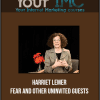
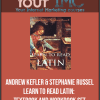
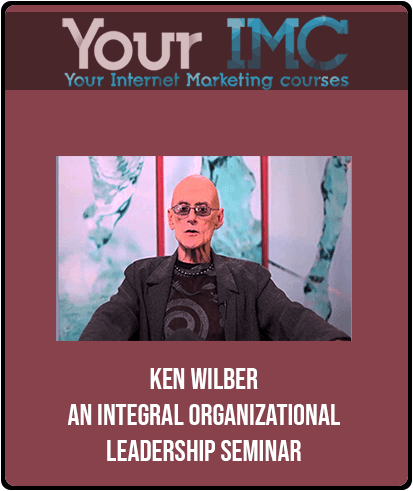

![[Download Now] Ken Wilber - Actualize OS: Digital Training](https://imc.sale/wp-content/uploads/2022/02/ken-wilber-actualize-os-digital-training-300x300-1.gif)
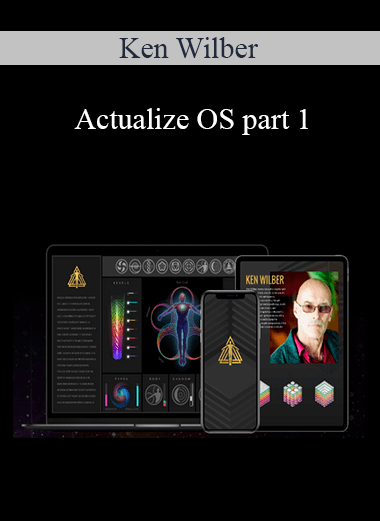
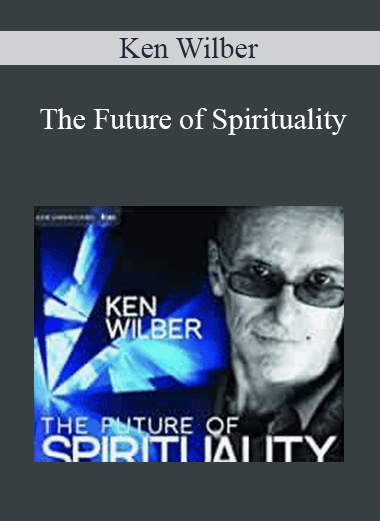
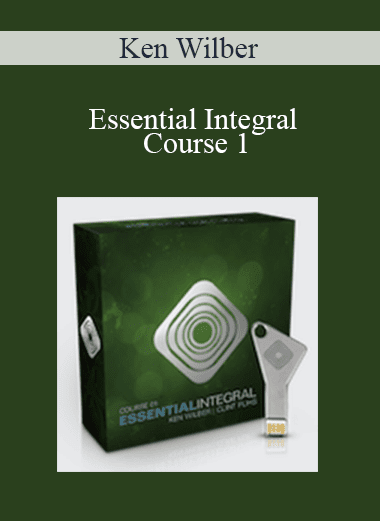
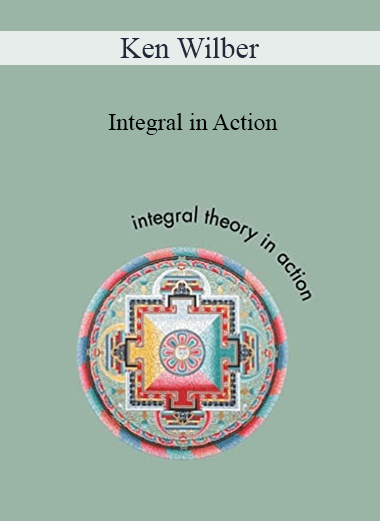
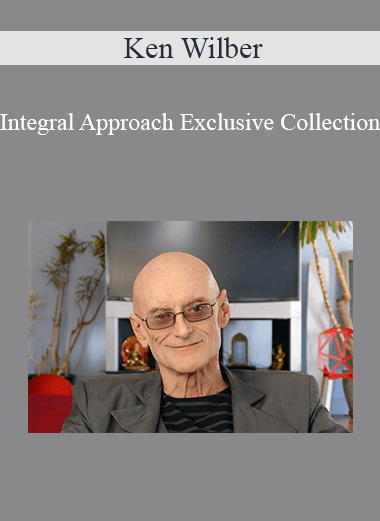
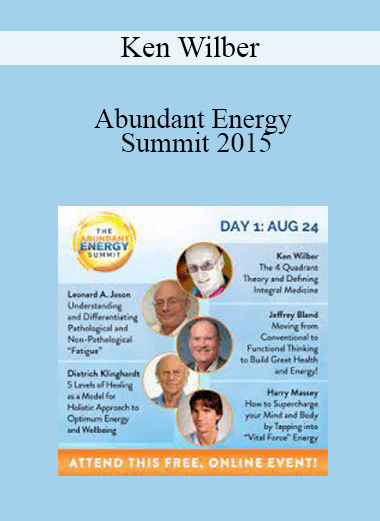
![[Download Now] Ken Wilber - Core Integral - Course 2 - Advanced Integral](https://imc.sale/wp-content/uploads/2022/02/Ken-Wilber-Core-Integral-Course-2-Advanced-Integral.png)
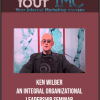
9 reviews for Ken Wilber – An Integral Organizational Leadership Seminar
There are no reviews yet.